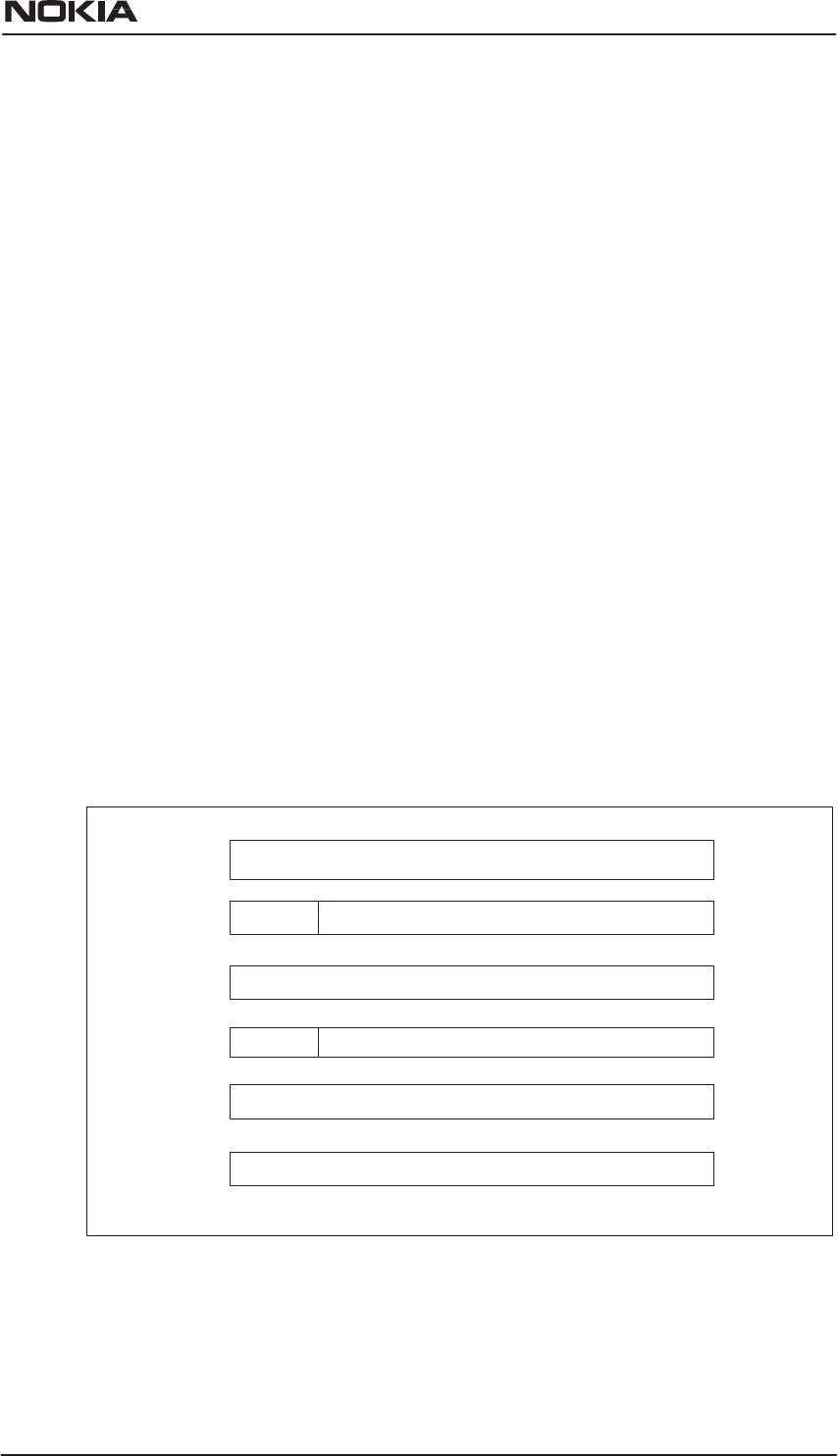
How your Nokia M10 works
DRAFT
E Copyright Nokia Telecommunications Oy
NTC C33539002SE_A0
6-5
When M10 operates in normal routing mode the DHCP request can be
relayed to the desired BOOTP/DHCP server. This functionality can be
used if DHCP server is located outside M10.
6.6 Payload encapsulation
Both routed and bridged protocols are encapsulated to the ATM uplink
using either LLC/SNAP encapsulation (ether-llc or ip-llc) or VC
multiplexing (ether-vcmux or ip-vcmux) according to RFC 1483. M10
will alternatively support PPP over AAL5 encapsulation (ppp-vcmux)
where both bridged and routed protocols are first encapsulated to PPP
(RFC 1661) which is, in turn, encapsulated to ATM according to IETF
PPP over AAL5 VC multiplexing.
Typically IP packets are encapsulated directly in the WAN interface
using the selected encapsulation method (ip-llc, ip-vcmux, or
ppp-vcmux). In some cases bridged encapsulation can also be used for
routed IP traffic. In these cases the IP packets are encapsulated in
Ethernet MAC frames and the MAC frames are then encapsulated in
the WAN interface using the selected encapsulation method (ether-llc,
ether-vcmux, or ppp-vcmux). The payload encapsulations are
presented in Figure 6-2.
AAL5
ether-llc
ppp-vcmux
ip-vcmux
ip-llc
ether-vcmux
LLC-SNAP
LLC-SNAP
MAC FRAME
MAC FRAME
IP
PPP
IP
Figure 6-2 Payload encapsulations
M10 also supports two frame-based WAN encapsulations: Ethernet
over HDLC and PPP over HDLC as defined in RFC 1662.


















